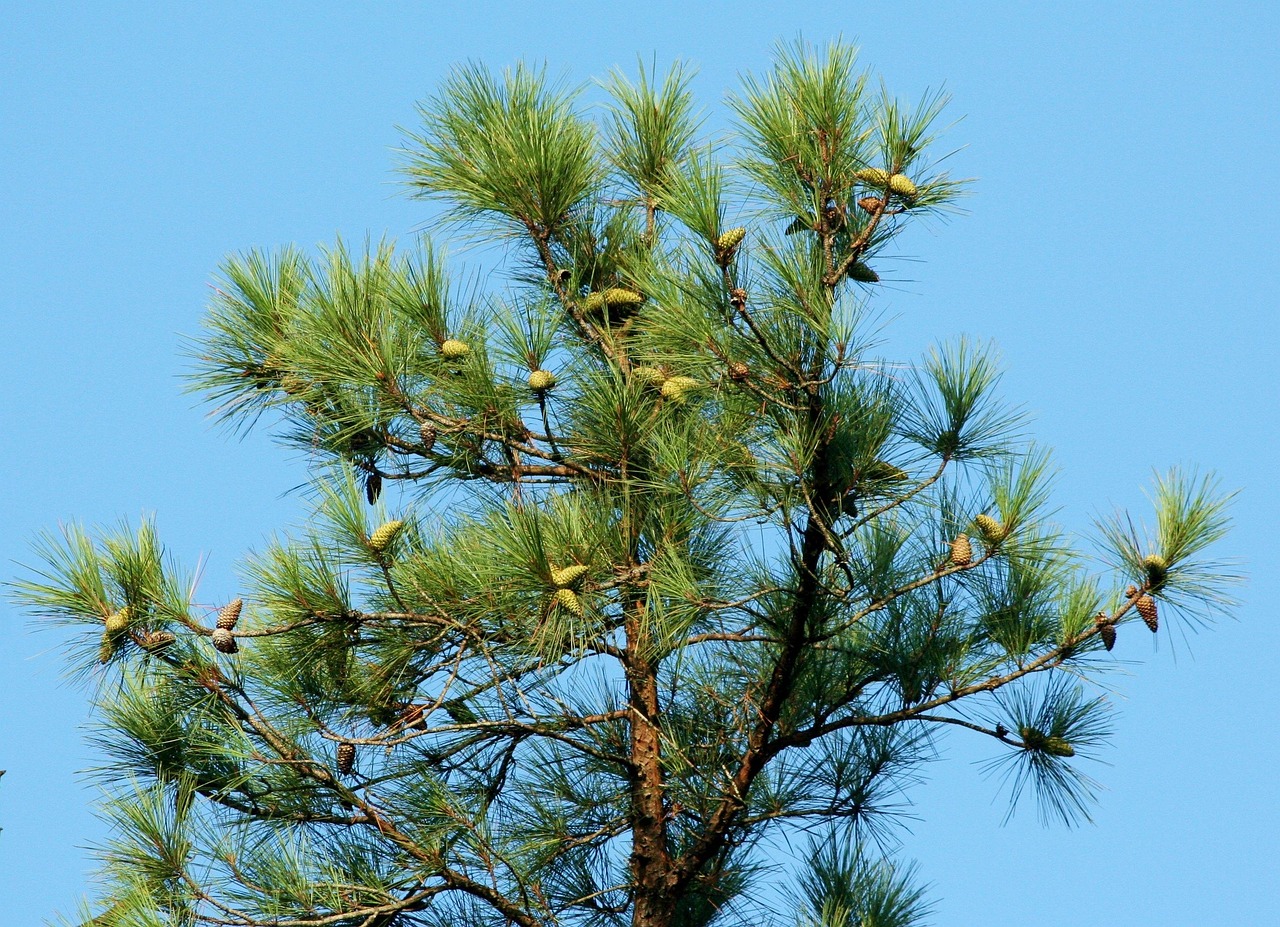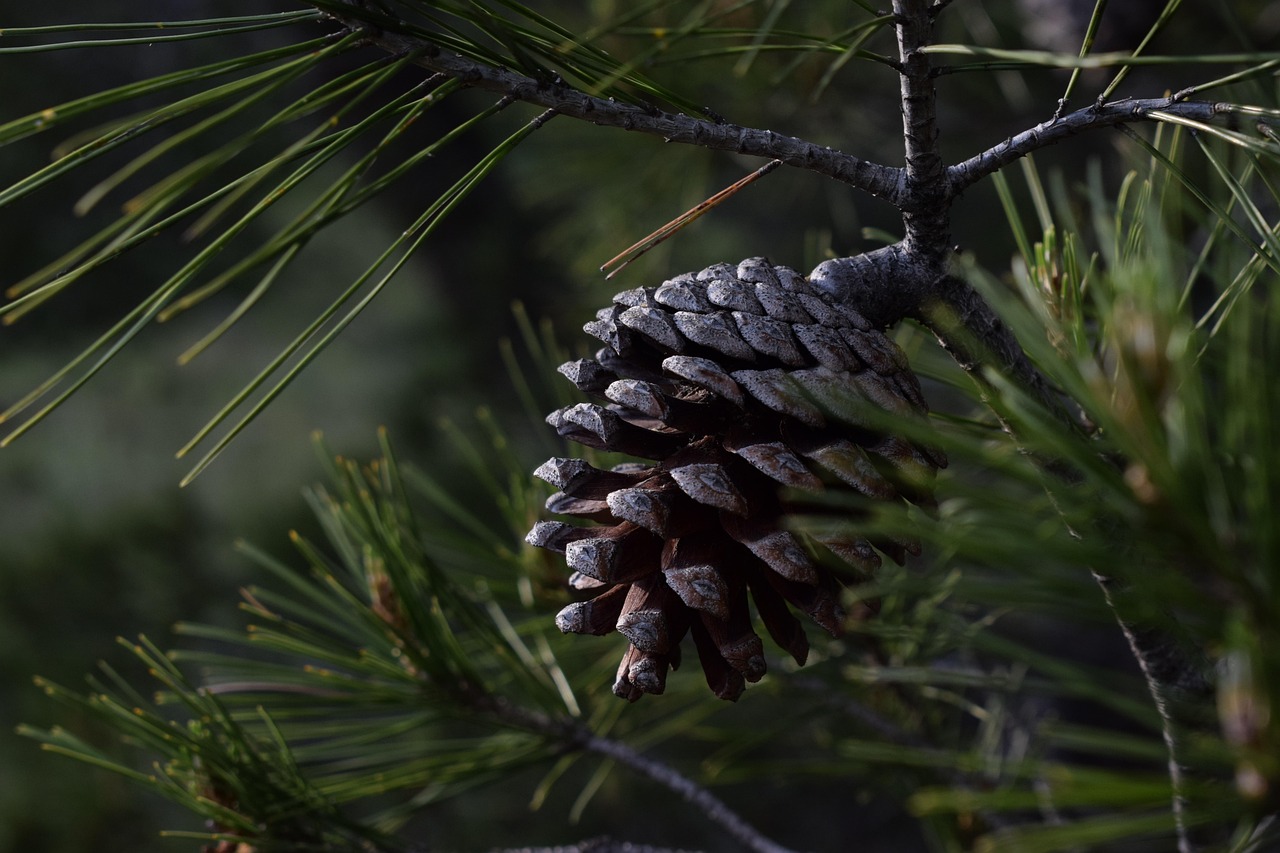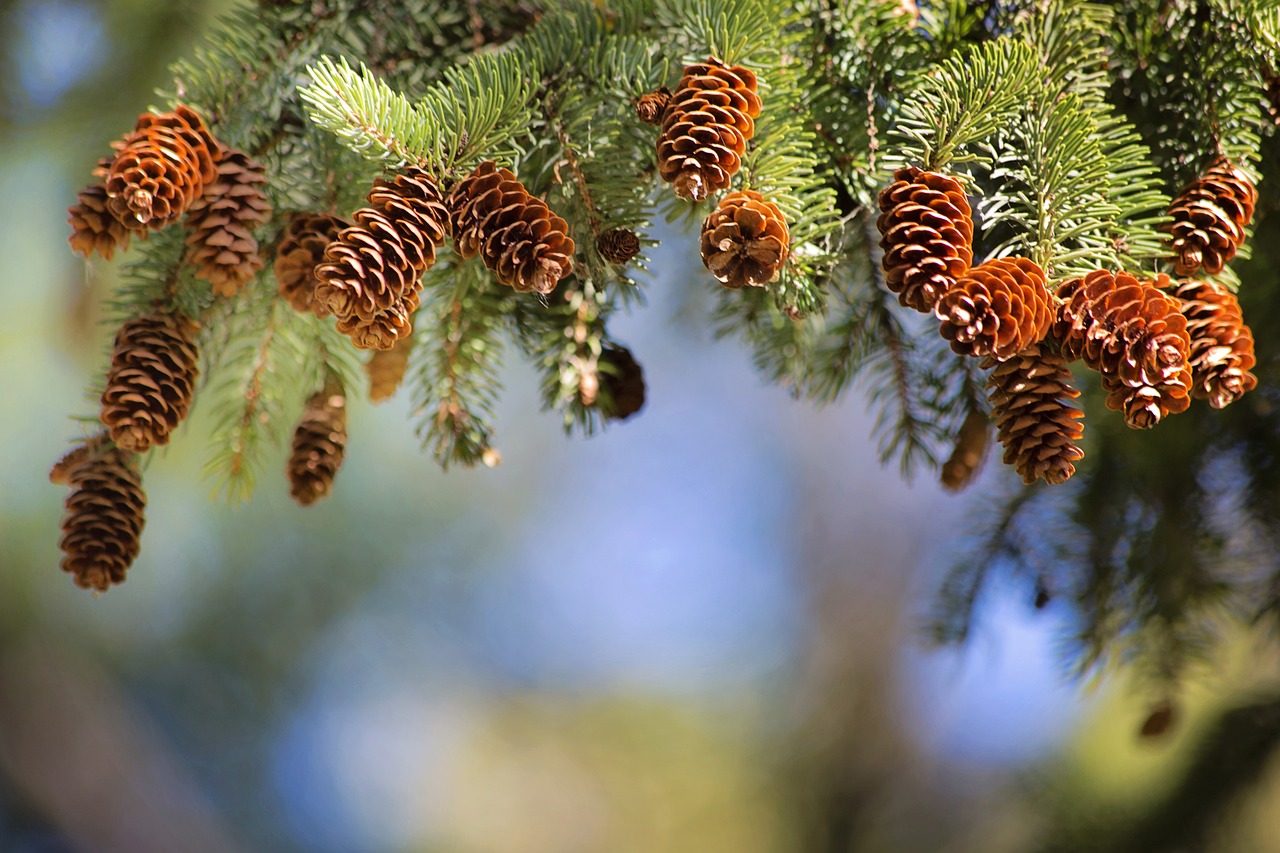The Loblolly Pine, scientifically known as Pinus taeda, is primarily found in the southeastern United States. Its natural range spans from Virginia to Florida and westward to Texas, thriving in various soil types and habitats.
Introduction to Loblolly Pine

The Loblolly Pine is one of the most significant tree species in the southeastern United States. It plays a crucial role in the forestry industry, providing timber, pulp, and a habitat for wildlife. This tree is well-adapted to the region’s climate and soil conditions, making it a common sight in both natural forests and managed plantations.
Loblolly Pines typically grow in a variety of environments, from wet lowlands to dry uplands. Their ability to thrive in different conditions is one reason they are so prevalent in the southeastern U.S. These trees are also crucial for soil stabilization and erosion control, helping maintain ecological balance in their native habitats.
This species can reach heights of up to 100 feet with a trunk diameter of 2 to 3 feet. The Loblolly Pine has a straight trunk and a conical shape, which makes it easily recognizable. The needles are long and slender, typically ranging from 6 to 10 inches in length, and grow in bundles of three. The cones are also distinctive, measuring 3 to 6 inches long, and can remain on the tree for several years.
Geographical Distribution
The Loblolly Pine is predominantly found across the southeastern United States. Its range includes several states where it forms extensive forests. Below is a list of states where Loblolly Pines are commonly found:
- Virginia
- North Carolina
- South Carolina
- Georgia
- Florida
- Alabama
- Mississippi
- Louisiana
- Texas
This broad distribution reflects the tree’s adaptability to various soil types, including sandy, clayey, and loamy soils. The Loblolly Pine thrives in acidic soils but can also tolerate alkaline conditions. It prefers areas with ample sunlight and moisture, particularly in regions that receive regular rainfall.
Habitat and Environmental Preferences
Loblolly Pines are often found in mixed forests alongside other tree species such as oaks, hickories, and sweetgum. They typically grow in environments that experience periodic disturbances, such as forest fires or storms. These disturbances can create openings that allow young Loblolly Pines to thrive.
In addition to their physical attributes, Loblolly Pines contribute significantly to their ecosystems. They provide food and shelter for various wildlife species, including birds, squirrels, and insects. The tree’s seeds are a food source for many small animals and birds, while its dense foliage offers protection from predators.
Growth Conditions
The growth rate of Loblolly Pines can be quite impressive under optimal conditions. They can grow up to three feet per year when planted in ideal environments. Below is a table summarizing key growth conditions for the Loblolly Pine:
| Growth Factor | Optimal Condition |
|---|---|
| Soil Type | Sandy or loamy soils |
| Sunlight | Full sun exposure |
| Moisture | Well-drained with adequate rainfall |
| Temperature Range | Moderate to warm climates (USDA zones 7-9) |
The adaptability of the Loblolly Pine to various environmental conditions makes it a valuable asset for reforestation efforts and timber production in the southeastern U.S. Its rapid growth and resilience allow it to thrive even after disturbances like logging or natural disasters.
Ecological Importance of Loblolly Pine
The Loblolly Pine is not just significant for its economic value; it also plays a vital role in the ecosystem. Its presence contributes to biodiversity and helps support various wildlife species. The tree’s structure and characteristics provide essential habitats for many organisms.
One of the critical roles of Loblolly Pines in the ecosystem is their ability to sequester carbon. As they grow, they absorb carbon dioxide from the atmosphere, helping to mitigate climate change. This carbon storage is crucial, particularly in urban areas where deforestation has occurred.
Wildlife Habitat
Loblolly Pines offer shelter and food for a variety of wildlife. Their dense foliage provides cover for birds and small mammals, while the seeds produced by the cones are an important food source. Many species rely on Loblolly Pines for survival, including:
- Birds: Species such as the Pine Warbler and Red-tailed Hawk often nest in Loblolly Pines.
- Mammals: Squirrels, raccoons, and deer utilize these trees for food and shelter.
- Insects: Various insects thrive in the ecosystem created by Loblolly Pines, supporting the food chain.
The trees also promote a diverse understory of plants, which can attract additional wildlife and enhance biodiversity in the area.
Commercial Value
The Loblolly Pine is one of the most commercially valuable tree species in the United States. Its timber is prized for various applications due to its strength and durability. The wood is commonly used in construction, furniture making, and paper production. Here are some key uses of Loblolly Pine:
- Lumber: The wood is used for framing houses and creating flooring.
- Pulpwood: It is processed into paper products, taking advantage of its rapid growth cycle.
- Resin: The tree produces resin used in various industrial applications.
The economic impact of Loblolly Pine extends beyond timber. The trees are often planted in managed forests and plantations, contributing significantly to the forestry industry. This not only provides jobs but also promotes sustainable practices that benefit local economies.
Plantation Management
Effective management practices are essential for maximizing the growth and health of Loblolly Pine plantations. These practices include:
- Site Preparation: Properly preparing the planting site enhances growth potential.
- Pest Management: Monitoring and controlling pests can prevent damage to young trees.
- Thinning: Selective thinning allows remaining trees to access more sunlight and nutrients, promoting healthier growth.
- Controlled Burns: Using prescribed burns can help manage underbrush and reduce competition for resources.
These practices ensure that Loblolly Pine plantations remain productive while maintaining ecological integrity. Sustainable management not only benefits producers but also preserves the surrounding environment.
Cultural Significance

The Loblolly Pine holds cultural significance in many regions where it grows. In addition to its economic value, it has historical importance for local communities. It has been used for generations in traditional crafts and building practices.
Furthermore, many communities engage in forestry education programs that focus on the sustainable use of Loblolly Pines. These programs aim to raise awareness about the importance of forest conservation and responsible management practices. By educating future generations, communities work towards preserving this valuable resource for years to come.
Overall, the Loblolly Pine is more than just a common tree species; it is an integral part of the ecosystem, economy, and culture of the southeastern United States. Its multifaceted significance underscores the importance of preserving and managing this remarkable tree species effectively.
Threats to Loblolly Pine Populations

Despite its resilience and adaptability, the Loblolly Pine faces several threats that can impact its populations and overall health. Understanding these challenges is essential for effective management and conservation efforts.
Climate Change
One of the most significant threats to Loblolly Pine forests is climate change. Fluctuating temperatures and altered precipitation patterns can affect growth rates and tree health. Here are some specific impacts of climate change on Loblolly Pines:
- Increased Heat: Higher temperatures can lead to heat stress, reducing the tree’s ability to photosynthesize effectively.
- Drought: Changes in rainfall patterns can lead to drought conditions, negatively affecting soil moisture and tree vitality.
- Pest Outbreaks: Warmer temperatures may allow pests and diseases to thrive, increasing the risk of infestations.
These factors can ultimately reduce the quality of timber and the health of forests, necessitating proactive management strategies.
Pests and Diseases
Loblolly Pines are susceptible to various pests and diseases that can cause significant damage. Some of the most common threats include:
- Bark Beetles: Species like the Southern Pine Beetle can devastate Loblolly Pine populations by burrowing into the bark and disrupting nutrient flow.
- Fungal Infections: Diseases such as Fusiform Rust can weaken trees, making them more susceptible to other stressors.
- Weevils: Pine weevils can damage young trees, leading to stunted growth or death.
Effective monitoring and management of these pests are crucial for maintaining healthy Loblolly Pine forests.
Conservation Efforts
To combat threats to Loblolly Pine populations, various conservation efforts are underway. These initiatives aim to ensure the sustainability of this important species while promoting biodiversity and ecosystem health.
Sustainable Forestry Practices
Sustainable forestry practices are essential for maintaining Loblolly Pine populations. These practices include:
- Selective Logging: This method involves carefully choosing which trees to harvest, allowing the remaining trees to thrive and maintain a healthy ecosystem.
- Reforestation: Planting new trees in areas where Loblolly Pines have been harvested helps restore habitats and promote biodiversity.
- Monitoring Forest Health: Regular assessments of forest health help identify problems early, allowing for timely intervention.
These practices not only benefit Loblolly Pines but also enhance overall forest resilience against pests and environmental changes.
Community Engagement
Community involvement is vital in conservation efforts. Many organizations and local communities participate in programs that encourage sustainable use of forest resources. Such initiatives often include:
- Educational Workshops: These programs teach community members about the importance of Loblolly Pines and sustainable forestry practices.
- Volunteer Planting Events: Engaging locals in tree planting activities fosters a sense of stewardship for the environment.
- Partnerships with Conservation Organizations: Collaborating with environmental groups can enhance conservation efforts through shared resources and expertise.
By involving communities in conservation activities, individuals gain a deeper appreciation for their local ecosystems and become advocates for preserving them.
The Role of Research in Conservation
Research plays an essential role in understanding the biology and ecology of Loblolly Pines. Ongoing studies help identify best management practices and potential threats to this species. Key areas of research include:
- Genetic Studies: Understanding the genetic diversity within Loblolly Pine populations can inform breeding programs aimed at enhancing resilience against pests and diseases.
- Climate Adaptation Research: Studies focusing on how Loblolly Pines respond to changing climatic conditions can guide management strategies to ensure their survival.
- Ecosystem Impact Assessments: Evaluating how Loblolly Pines interact with other species helps scientists understand their ecological roles better.
This research is crucial for developing adaptive management strategies that will benefit both Loblolly Pines and the broader ecosystems they inhabit.
Future of Loblolly Pine Forests

The future of Loblolly Pine forests is shaped by how we address the challenges they face today. Climate change, pests, and habitat loss are ongoing concerns that require proactive measures. As understanding of these challenges improves, so too does our ability to develop effective strategies for the preservation and management of Loblolly Pines.
Investment in research is essential for anticipating future threats and enhancing the adaptive capacity of Loblolly Pines. Strategies may include breeding programs that focus on genetic diversity to create more resilient trees, as well as developing pest-resistant strains. Furthermore, integrating traditional knowledge with scientific research can provide valuable insights into sustainable practices that have been effective over generations.
Community and Educational Initiatives
Engaging local communities in conservation efforts remains a cornerstone for the success of Loblolly Pine preservation. Educational initiatives not only raise awareness about the importance of this species but also empower individuals to take action. Programs can range from school-based environmental education to community workshops that focus on sustainable land use practices.
By fostering a sense of ownership and responsibility towards local forests, communities can become effective stewards of the environment. Initiatives might include:
- Tree Planting Days: Organizing events where community members can plant Loblolly Pines helps restore habitats and strengthen community ties.
- Nature Walks and Guided Tours: These programs educate participants about local ecosystems and the role of Loblolly Pines within them.
- Citizen Science Projects: Involving the public in data collection for monitoring tree health or biodiversity reinforces community engagement and scientific literacy.
The Role of Policy in Conservation
The significance of policy cannot be understated when it comes to the conservation of Loblolly Pines. Effective legislation can promote sustainable forestry practices, protect critical habitats, and ensure that economic development does not come at the expense of environmental health. Policymakers should consider:
- Incentives for Sustainable Practices: Providing financial support to landowners who implement sustainable forestry practices encourages responsible management of Loblolly Pine forests.
- Establishing Protected Areas: Designating certain regions as protected can help conserve vital ecosystems and safeguard against overexploitation.
- Research Funding: Allocating resources for research on Loblolly Pine ecology and management can lead to innovative solutions for current challenges.
Conclusion
The Loblolly Pine is an essential component of the southeastern United States’ ecological, economic, and cultural landscape. Its adaptability and significance make it a vital species for both natural ecosystems and human use. However, threats such as climate change, pests, and habitat loss pose risks that require immediate attention.
Through a combination of sustainable forestry practices, community engagement, and ongoing research, we can ensure a promising future for Loblolly Pine populations. By fostering awareness and encouraging responsible stewardship, we can protect this remarkable tree species while enhancing biodiversity and ecosystem health.
Ultimately, the preservation of Loblolly Pines is not just about conserving a single species; it is about maintaining the intricate balance of the environment that supports countless forms of life. With concerted efforts from communities, researchers, and policymakers alike, we can ensure that Loblolly Pines continue to thrive for generations to come.
